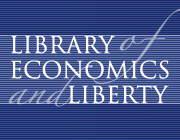
Tobin argues that one cannot predict the effect of monetary policy on output and unemployment simply by knowing the interest rate or the rate of growth of the money supply. Monetary policy has its effect, claims Tobin, by affecting capital investment, whether in plant and equipment or in consumer durables. And although interest rates are an important factor in capital investment, they are not the only factor. Tobin introduced the concept of "Tobin's q" as a measure to predict whether capital investment would increase or decrease. The q is the ratio between the market value of an asset and its replacement cost. Tobin pointed out that if an asset's q is less than one—that is, the asset's value is less than its replacement cost—then new investment in similar assets is not profitable. If, on the other hand, q exceeds one, this is a signal for further investment in similar assets. Tobin's insight was also relevant to his ongoing debate with Milton Friedman and other monetarists. Tobin argued that his q, by predicting future capital investment, would be a good predictor of economy-wide economic conditions.
Another of Tobin's contributions was his portfolio-selection theory. He argued that investors balance high-risk, high-return investments with safer ones, so as to achieve a balance in their portfolios. Tobin's insights helped pave the way for further work in finance theory.
Tobin did his undergraduate and graduate work at Harvard University, with an interruption to serve in the U.S. Navy during World War II. Since 1950 he has been an economics professor at Yale University. He took a leave of absence to serve as a member of President Kennedy's Council of Economic Advisers from January 1961 to July 1962. Tobin is quite proud of the 1962 Economic Report of the President that he helped write. Tobin calls the report, which was mainly written by chairman Walter Heller, along with Tobin, Kermit Gordon, Robert Solow, and Arthur Okun, "the manifesto of our [Keynesian] economics, applied to the United States and world economic conditions of the day." Its counterpart in the Reagan years was the 1982 Economic Report. Always the partisan, although an honest and thoughtful one, Tobin says: "It is interesting to compare the two; we have nothing to fear."
Tobin was also an adviser to 1972 presidential candidate George McGovern. Tobin, like most other economists across the political spectrum, believes that government regulation often causes damage. Writes Tobin: "We should be especially suspicious of interventions that seem both inefficient and inequitable, for example, rent controls in New York or Moscow or Mexico City, or price supports and irrigation subsidies benefiting affluent farmers, or low-interest loans to well-heeled students."
In 1970 Tobin was president of the American Economic Association. He is also the author of this encyclopedia's article on monetary policy.
"On Improving the Economic Status of the Negro." Daedalus 94, no. 4 (Fall 1965): 878-97.
"One or Two Cheers for 'The Invisible Hand.' "; Dissent (Spring 1990): 229-36.
"Liquidity Preference as Behavior towards Risk." Review of Economic Studies, 25 no. 67 (1958): 124-31.
National Economic Policy. 1966.
The New Economics One Decade Older. 1974.
(Edited with Murray Weidenbaum.) Two Revolutions in Economic Theory, The First Economic Reports of Presidents Kennedy and Reagan. 1988.


